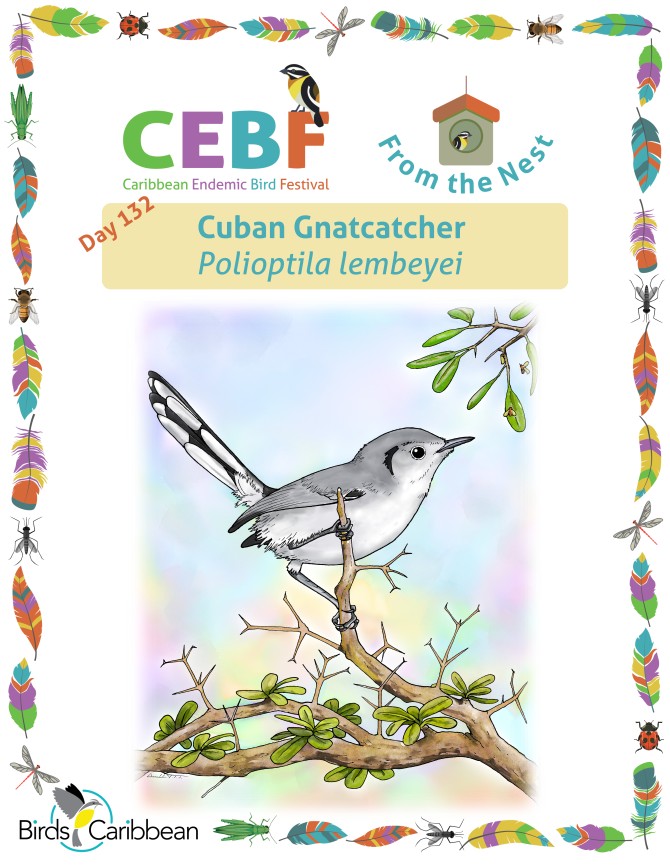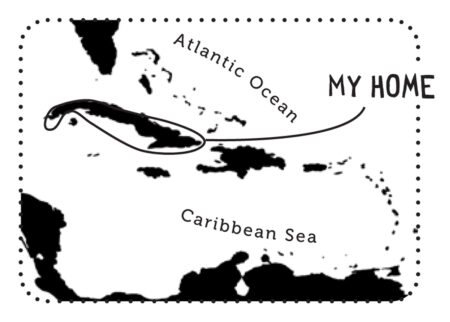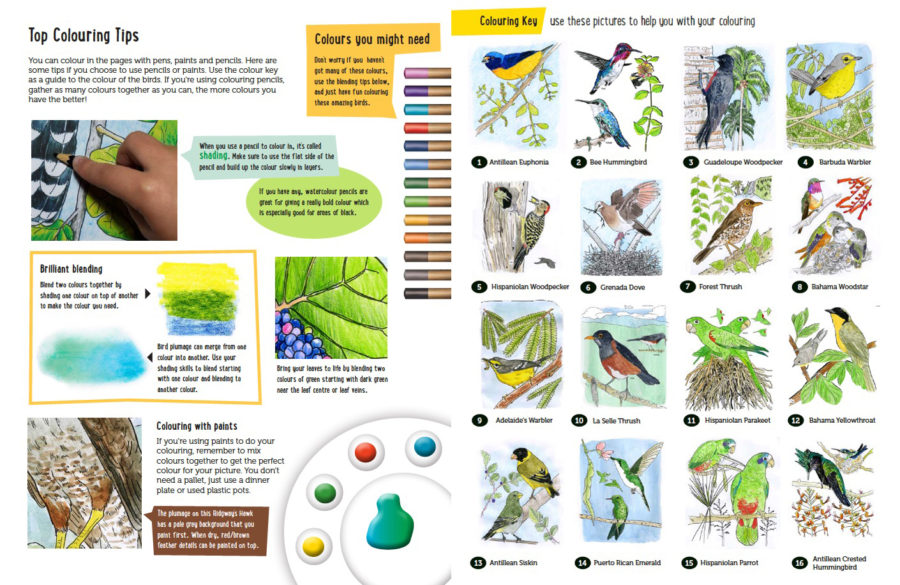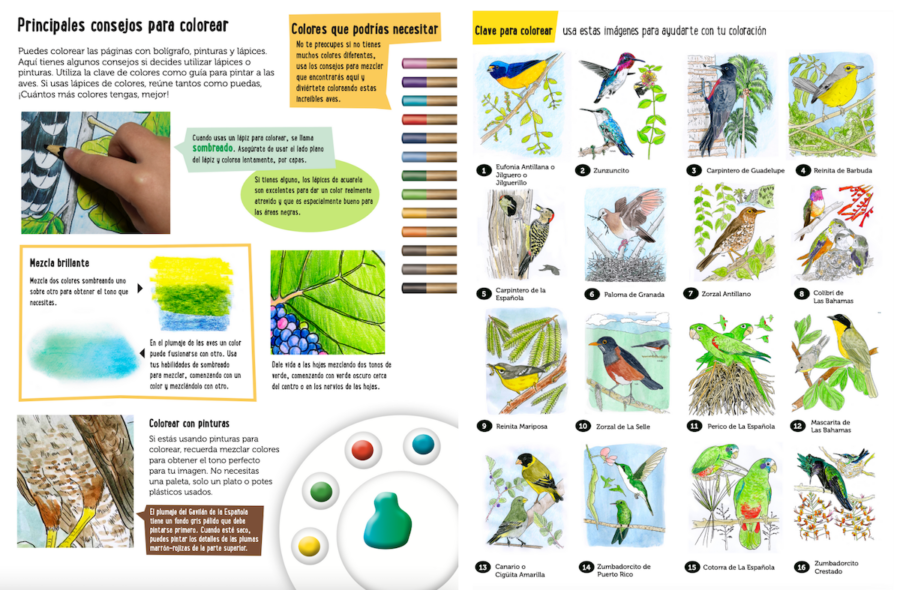Celebrate the Caribbean Endemic Bird Festival (CEBF) with us! Our theme in 2024 is “Protect Insects, Protect Birds”—highlighting the importance of protecting insects for birds and our environment. Have fun learning about a new endemic bird every day. We have colouring pages, puzzles, activities, and more. Download for free and enjoy learning about and celebrating nature!
Endemic Bird of the Day: Cuban Gnatcatcher
Did you know that in Cuba we have a miniature endemic mockingbird? That’s right! It’s the Cuban Gnatcatcher, known locally as ‘Sinsontillo’—which means mockingbird! Just in case you wondered—no, it doesn’t belong to the same family as the well-known mockingbird—but its name fits perfectly! Its appearance, tail, habitat, and even its song are almost identical to those of the mockingbird.
The Cuban Gnatcatcher is one of the smallest birds in Cuba. Both sexes have a similar blue-gray and white plumage, but the male stands out for its beautiful song. They spend the day in small family groups or pairs, mainly looking for small insects and occasionally smaller reptiles. Along with the Cuban Vireo, it is one of the most confiding species we have in Cuba. It is not afraid of humans, providing us with the opportunity to appreciate its beauty up close and enjoy its presence in our natural environment.
This small bird is considered relatively common in particular isolated patches of coastal scrub habitat with medium-height trees. It can be found in the north of Holguín, Camagüey, the northern Keys of Ciego de Ávila and Santa Clara, and in the southern region in Guantánamo, Santiago de Cuba, Granma, Trinidad, and Cienfuegos.
Whilst the Cuban Gnatcatcher is often confused with the Blue-gray Gnatcatcher, a migratory species that visits Cuba in winter and is found throughout the country, they can actually be easily distinguished! Cuban Gnatcatchers usually stay in low and thorny terrain in small families—while the Blue-gray Gnatcatcher is found anywhere, from gardens to parks, often in small groups in August when it begins its migration south.
Additionally, the Cuban Gnatcatcher has a loud melodious song and a black crescent behind the eye to the ear, features that are not present in the Blue-gray Gnatcatcher. So if you are away from the coast and see a small bird with these characteristics in the winter months, you have most likely spotted the Blue-gray Gnatcatcher, rather than the Cuban Gnatcatcher.
The naturalist Juan (Johannes) Gundlach first named the Cuban Gnatcatcher in 1858. Its scientific name, lembeyei, was a gesture of humility and gratitude from Gundlach to his friend and colleague, Spanish naturalist Juan Lembeye, with whom he shared many field expeditions and valuable information about Cuban birds. This led Lembeye to include them in his book of 1850, long before Gundlach published his first work in 1876.
The nests of the Cuban Gnatcatcher are built at the end of March and resemble those of the Cuban Emerald hummingbird, but are slightly larger. It is one of the few endemic Cuban species whose natural history has recently been well studied by Cuban researchers. However, we still need to find out more about the limits of its distribution. This little bird is restricted to specific areas along the coast, habitat that is under increasing pressure for tourism development. It is therefore important for us to learn more about its habitats, and actively protect these to preserve its populations.
Learn more about this species, including its range, photos, and calls here. Great news! If you’re in the Caribbean, thanks to BirdsCaribbean, you have free access to Birds of the World and you can find out even more in the full species account of this bird!
Thanks to Arnaldo Toledo for the illustration and Yaroddys Rodriguez for the text!
Colour in the Cuban Gnatcatcher
Download our West Indies Endemic Bird colouring page. Use the photos below as your guide, or you can look up pictures of the bird online or in a bird field guide if you have one. Share your coloured-in page with us by posting it online and tagging us @BirdsCaribbean #CEBFfromthenest
Listen to the song of Cuban Gnatcatcher
The song of the Cuban Gnatcatcher is a loud and melodious series of whistles and trills.
Puzzle of the Day
Click on the image below to do the puzzle. You can make the puzzle as easy or as hard as you like – for example, 6, 8, or 12 pieces for young children, all the way up to 1,024 pieces for those that are up for a challenge!
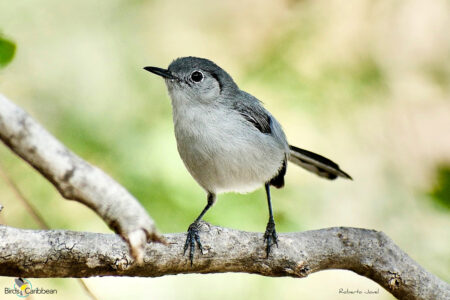
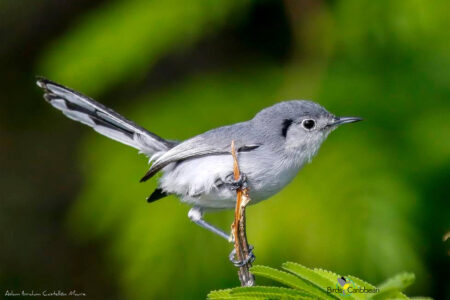
Activity of the Day
FOR KIDS AND ADULTS: During our 2024 celebration of Caribbean endemic birds we will be sharing a beautiful colouring page for every single bird we feature! These lovely pages were created for us by Arnaldo Toledo, who also created a coloured in version of each bird as inspiration. Get your colour pencils ready, and read these super helpful colouring in tips below. Then go ahead, download and print each bird, and get colouring! Enjoy!
These tips are also available in Spanish:
Enjoy this video of a Cuban Gnatcatcher in the wild!

